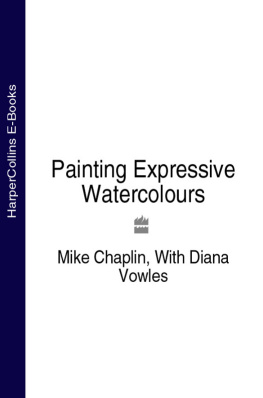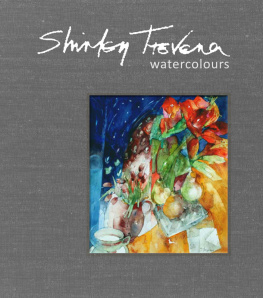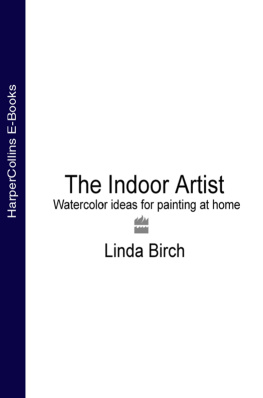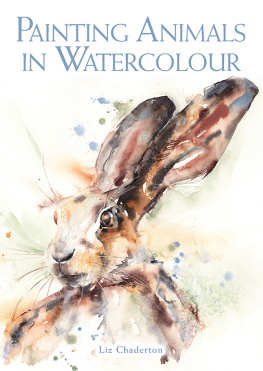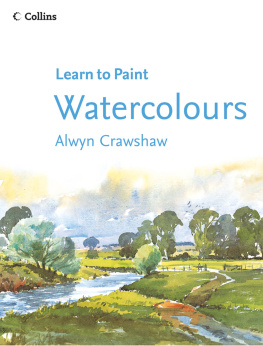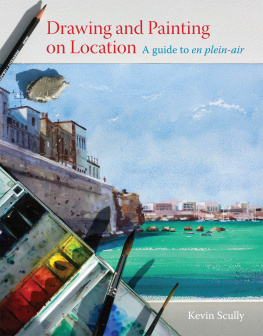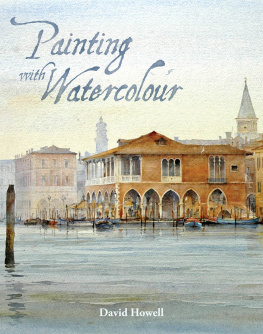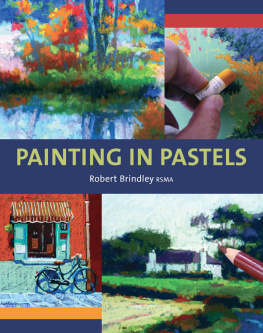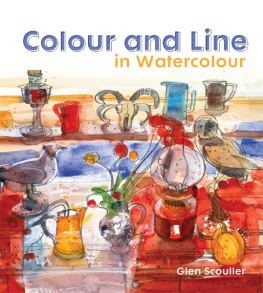


First published in 2017 by
The Crowood Press Ltd
Ramsbury, Marlborough
Wiltshire SN8 2HR
www.crowood.com
This e-book first published in 2017
David Howell 2017
All rights reserved. No part of this publication may be reproduced or transmitted in any form or by any means, electronic or mechanical, including photocopy, recording, or any information storage and retrieval system, without permission in writing from the publishers.
British Library Cataloguing-in-Publication Data
A catalogue record for this book is available from the British Library.
ISBN 978 1 78500 231 1
FRONTISPIECE: Pin Mill Barges.
Contents
Introduction
Of all the painting mediums that have evolved over the centuries, its a fairly safe bet that watercolour was the first. Colours may have been limited to browns, umbers or ochres depending on where your cave was located but at some stage our ancestors would have passed the occasional happy hour stirring around in a puddle with a stick and making marks on themselves and on nearby rocks and walls. All over the world there are examples of cave art that dates back to pre-historic times, where individuals have portrayed figures and animals in particular and in the process found different coloured pigments as well as charcoal from the fire to make their paintings more effective.

The Bedouin Souk, Jeddah.
What is particularly apparent in most examples are the drawing skills that allowed the artists to portray the animals they hunted and lived amongst so superbly and whilst they may not have had access to brushes, they would have discovered that a bit of animal fur dipped in pigment worked pretty well and there is even evidence to suggest that they made stencils and sprayed paint on. Bearing in mind most of this activity at the time would have been done in very dim lighting conditions and that the artists wouldnt have been able to hop outside with a camera to take a few pics to copy back in the cave, what we can see is a testament both to their artistic skills and their powers of observation and memory to create something, that in the best examples, is quite extraordinary.
In relatively more recent times other forms of painting have been developed, along with an ever-widening range of pigments and todays painters are spoilt for choice but despite this, watercolour has kept pace and is arguably the favourite and most convenient medium for most amateur painters and is highly regarded by many of todays professionals.
My own watercolour journey started when I was about five or six at a time when the wireless or a gramophone was the only form of electronic entertainment and that it was perfectly normal to find kids something to do to keep them occupied and out of the way and my first paint box was a standard example of the black metal variety with twelve half pans and mixing wells in the lid. My subjects at the time were in much the same genre as the cave dwellers thousands of years before, in that I painted what I saw outside which, rather than bison, wolves, jackals, and the odd elephant, were more likely to be Bedfords, Leylands, Fords, and Albions and anything else that might be driving past on a regular basis. As my painting developed over the years with oils and acrylics, watercolours were relegated to a supporting role as initial sketches for larger paintings but my wife often expressed a preference for the watercolours and later an ever increasing number of customers made the same choice. This book is based on seventy years of working with all the highs and lows of what is seen in some circles as a difficult medium. Its written by a painter of work that might be described as figurative or representational, who is most at home amongst landscape and marine subjects with occasional forays into other genre and the contents of this book reflect that, whilst accepting that there are other ways of tackling and using watercolour. Painting isnt meant to be easy and watercolour can offer more than a few challenges but it is deeply satisfying if you get it somewhere about right and this book offers practical ways of working with the medium and at the same time offers ideas and thoughts that can make your painting methods more exciting and adventurous and simply more painterly.
Chapter 1
Materials and Equipment
One of the great attractions of watercolour is that you really dont need very much in the way of materials and equipment. In its simplest form all that is needed is a basic paint box, a brush, something to paint on and a supply of water. However, we live in a world where hardly a week goes by without new products and paints appearing on the market and where internet shopping gives us access to an ever widening range of goodies but its still worth reiterating at this stage that, as watercolour painters, you really dont need a huge amount of stuff but investment in quality rather than quantity will pay dividends.

Fig. 1.0Il Pescheria, Venice.
Paint
The major manufacturers of paint have a range of at least 100 colours on offer and at least a couple have well over 200. This is all very exciting and possibly confusing but its up to us as painters to be selective and to find a range of pigments that suit our individual approach to the medium. The reality is that a carefully chosen range of the primary colours together with a selection of Earth pigments is sufficient to allow a painter to produce pretty well anything in terms of colour and hue that is needed, irrespective of location or subject matter, whereas buying paint just because it looks interesting on a colour chart or the name sounds different and exciting, might just be a way of making things rather expensive and unnecessarily complicated. We will all be tempted at some point to try something different but apart from botanical painters or illustrators who might spend ages looking for just the right colour straight out of the tube, the rest of us should get used to a tried and tested range of colours that works for us in any situation and can be mixed to produce any tone, colour or tint required. Its so easy with spontaneous buying of this and that to end up with a selection of tubes or pans that rarely see the light of day and just take up storage space. The other argument for sticking with a limited palette is that you get used to the paints involved, their tinting power and how they mix and you will have a pretty good idea of what they will look like, both when they hit the paper and when they have dried. Remember watercolour dries a paler shade than when its wet and familiarity with colours allows you to concentrate on the subject, rather than wondering whats going to happen next.



